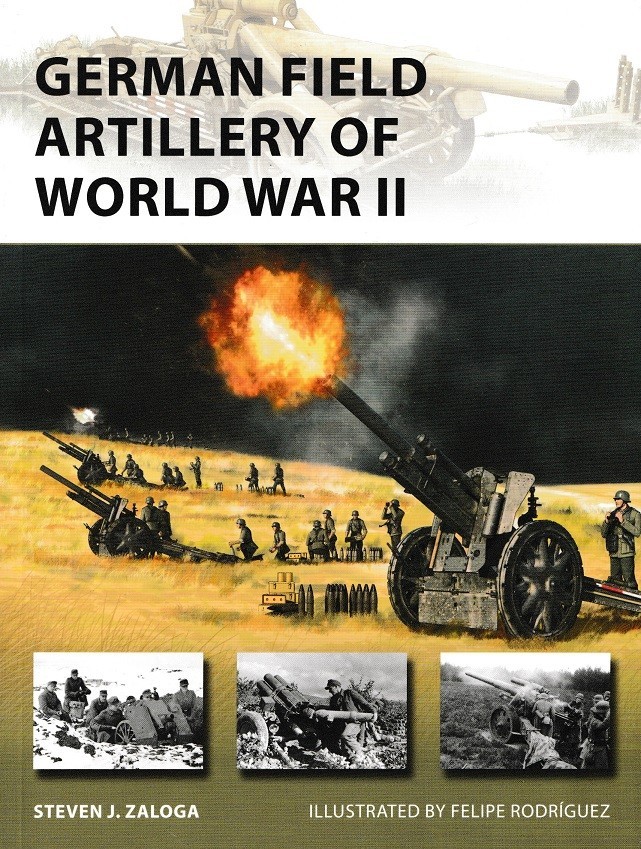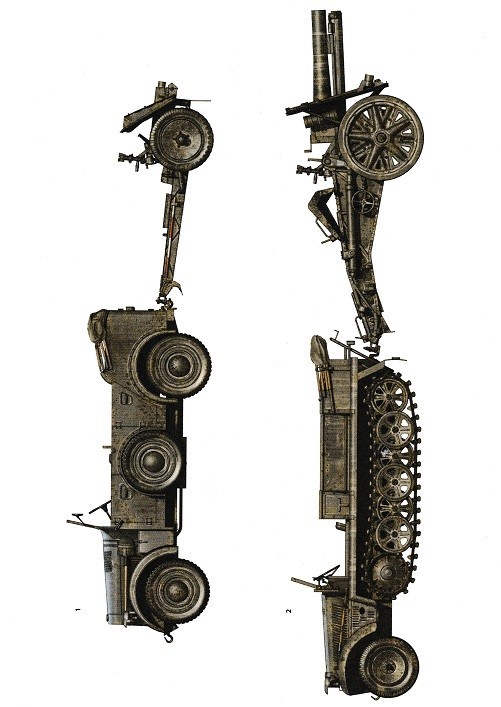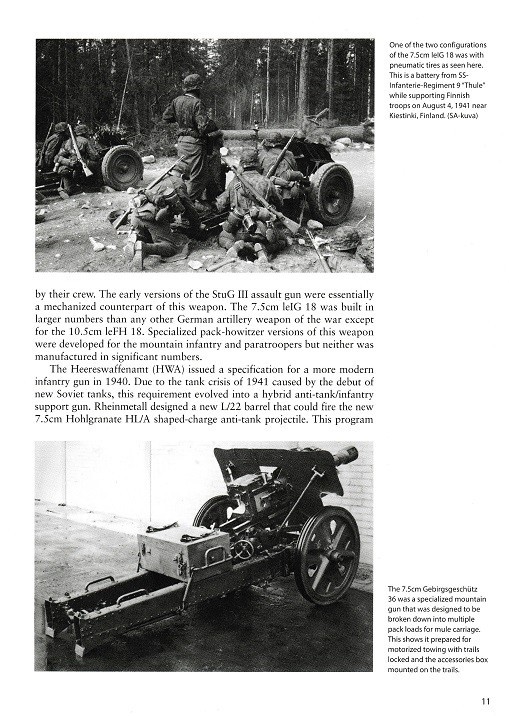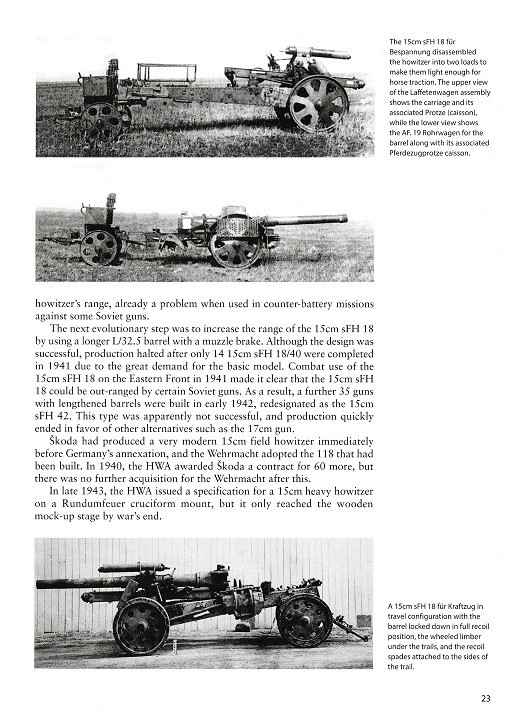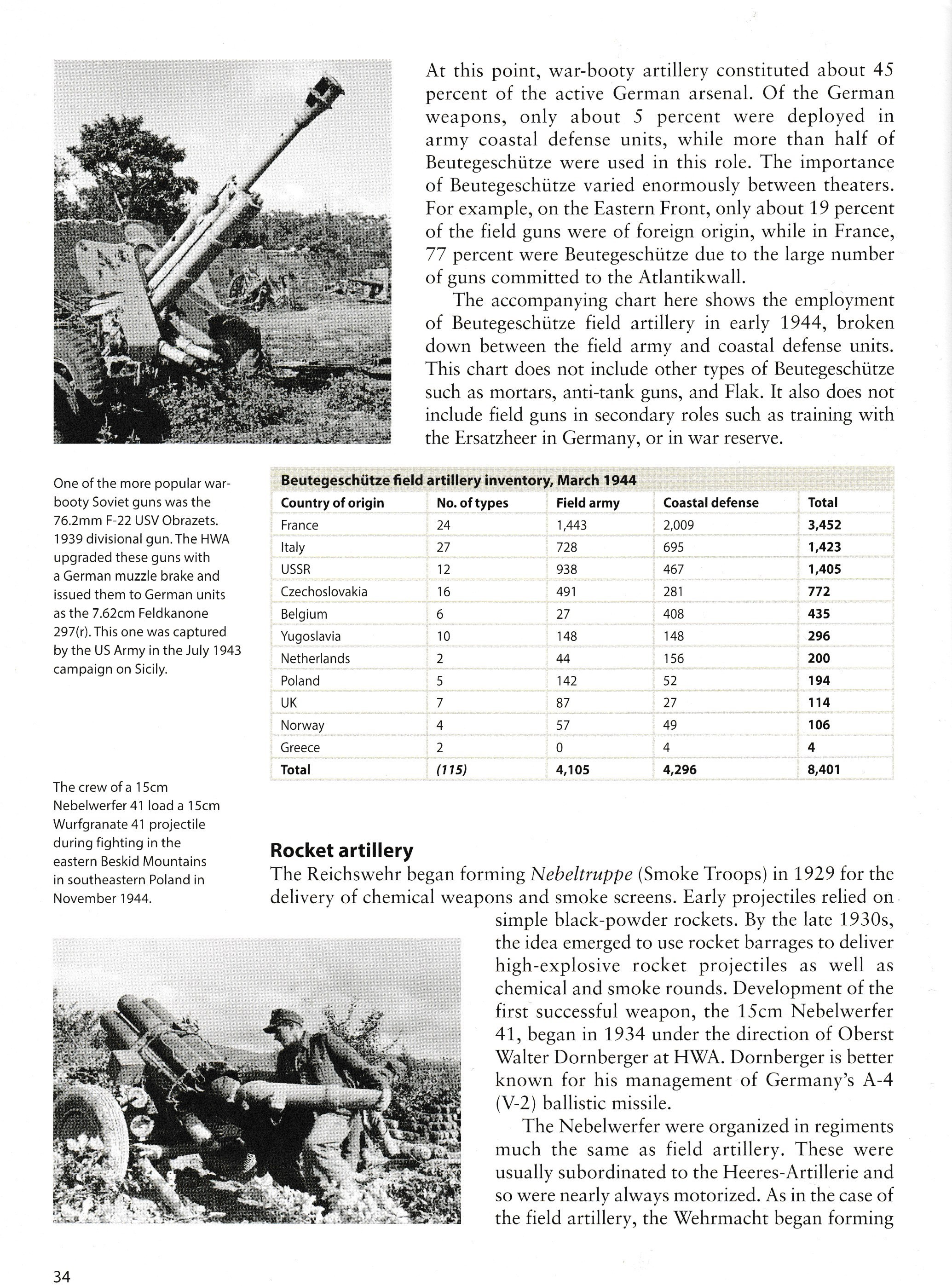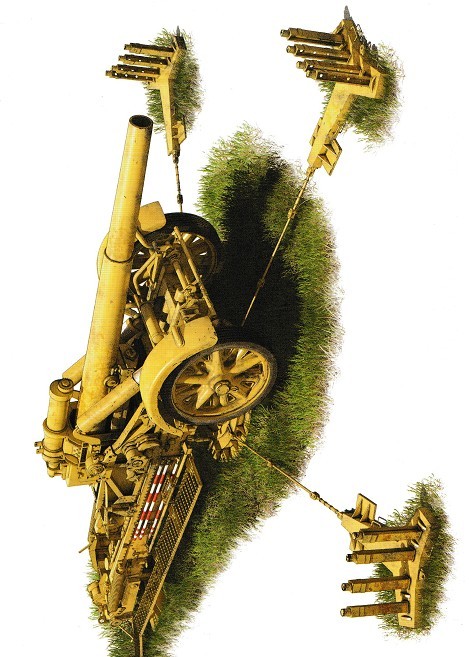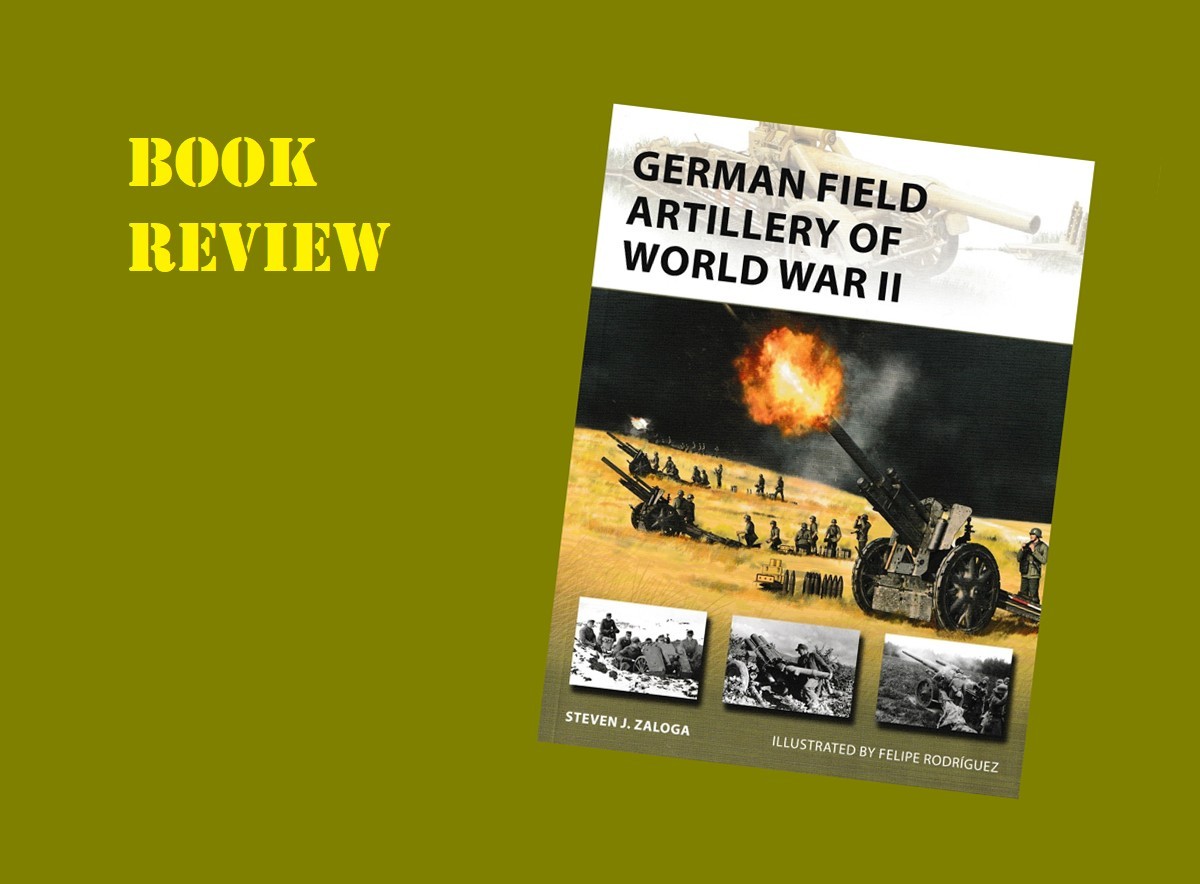HISTORY:
** Overshadowed in military history by the tanks and aircraft of Blitzkrieg, Germany's artillery was key to its warfighting strategy throughout World War II. Field artillery remained the primary killer on the battlefield, often responsible for three-quarters of combat casualties inflicted.
Redressing the balance, weaponry expert Steven J. Zaloga surveys the major Wehrmacht guns of the war, and the basic organizational structure of the German field artillery. He focuses primarily on the divisional field guns, especially the IFH 18 10.5cm field howitzer and the 15cm sFH 18 field howitzer that formed the backbone of Germany’s artillery. Infantry corps-level guns are also considered, as is the use of " Beutegeschütze” - captured war-booty field guns - and the Nebelwerfer and schwere Wurfgerät rocket artillery.
Using archive photos and meticulously detailed illustrations, this book provides a concise study of the German Army's big guns of World War II, and how they were organized and used, on both the Eastern and Western fronts.**
** Quoted from the back cover of the book.
THE BOOK:
Osprey Publications has released German Field Artillery of World War II as Number 325 in their New Vanguard series. It is a 48-page soft cover book, 7 x 10 inches in size. Included with the text are black and white and color photographs, color illustrations, detailed captions, informational charts and more. It has a 2023 copyright, a publication date of December 21, 2023, and the ISBN is 978-1-4728- 5397-4.
THE CONTENTS:
Introduction
Artillery Organization
- Infantry guns
- Divisional artillery
- GHQ artillery
- Beutegeschütze
- Rocket artillery
Artillery in Combat
- Artillery of the Blitzkrieg era 1939-41
- Artillery on the Eastern Front 1941–45
- Artillery on the Western Front 1944–45
Further reading
Index
THE TEXT:
Author Steven J. Zaloga provides a well written and informative text detailing German artillery and it’s use during World War II. Detailed information is provided on various types of German artillery pieces, of both German manufacture and foreign manufacture in use in the German military. As listed in the contents section, Steven J. Zaloga covers the different types of artillery used from the smaller infantry artillery pieces to the larger artillery pieces to rocket artillery such as the Nebelwerfer. Also discussed is one of my favorite military subjects, captured military weapons and equipment (Beutegeschütze). The weapons and weapons systems are all nicely detailed with the specifications for each provided such as caliber, rate of fire and range, improvements made to the weapons such as longer barrels, as well as successes and shortcomings, the locations where the weapons were deployed and put to use as well as how the guns were moved, the operation of the specified weapon and the gun battery organization. In addition to his own words, Steven J. Zaloga has also provided personal accounts from the US Army’s VII Corp and from Gerhard Engel, commander of Germany’s 12.Infanterie-Division. The text in the book is nicely written and well detailed. As I read through the text, I didn’t notice any spelling or grammatical errors. Grammar and spelling might not be an important factor to everyone however it is something that I take notice of and pass on my findings. I feel that if the text is well written then it shows that the author has taken the time to be professional with their writing. I believe that the reader will not be disappointed with Steven J. Zaloga’s text.
THE PHOTOGRAPHS:
A total of 44 black and white photographs and 1 color photograph are included in this volume. The photographs range from wide angle photographs to close-up photographs of the specific weapons being discussed in the text. They contain a combination of in-action photographs, photographs removed from motion pictures to photographs that have been staged for the photographer as well as individual weapons in static display. The majority of the photographs are clear and easily viewable; however, a few have an out of focus look to them and some appear to be too dark, and others appear too light. This is typical for the discussed period of history and the quality of the photographs is of no fault of the author and do not take anything away from the book. Author Steven J. Zaloga stuck to the title of the book and chose subject specific photographs and did not include photographs that strayed from the main subject of the book. The majority, if not all, of the photographs will prove to be a wealth of information to the scale modeler as well as anyone interested in German artillery, and it’s use during World War II due to the details they contain.
THE ILLUSTRATIONS:
There are 9 color illustrations and one black and while illustration included in the volume by illustrator Adam Hook. The illustrations are very well done, nicely detailed and are of:
Plate A
Towing The Infantry Guns
- Dual color illustrations on one page depicting artillery pieces and their prime movers shown as left side profile illustrations. Accompanying the illustrations is a detailed caption on the preceding page. The two illustrations are of:
- 7.5cm Infanteriegeschütz 18 towed by a Kfz. 12 mittelschwerer geländegängiger Personenkraftwagen.
- 15cm schwere Infanteriegeschütz 33 towed by a Sd.Kfz. 10 1-tonne half-track
Plate B (see attached scan)
Moving The Divisional Guns
- Dual color illustrations on one page depicting artillery pieces and their prime movers shown as left side profile illustrations. Accompanying the illustrations is a detailed caption on the preceding page. The two illustrations are of:
- 10.5 cm leFH 18 towed by a RSO (Raupenschlepper Ost: tracked prime mover – East)
- 15cm sFH 18 towed by a Sd.Kfz.7 8-tonne half-track
Plate C
10.5cm Ammunition For LEFH 18
- A one-page color illustration showing 14 different types of artillery ammunition and charges. Accompanying the illustrations is a detailed key on the same page as the illustration as well as a detailed caption on the preceding page.
Plate D
15cm schwere Infanteriegeschütz 33 with Stielgranate 42
- A one-page color illustration showing a 15cm schwere Infanteriegeschütz 33 with Stielgranate 42 installed on the bore end of the gun. There is also a profile view and a front view of a Stielgranate 42 round. Accompanying the illustrations is a detailed caption on the preceding page.
Plate E
10.5cm LeFH 18 Battery in Combat, Russia, Summer 1941
- A two-page color illustration that is the same illustration featured on the front cover of the book.
Plate F
Schwere Wurfgerät 41
- A one-page color illustration showing a metal Schwere Wurfgerät 41 in its ready position as well as an illustration of a 28cm Wurfkörper Spreng (explosive) rocket and an illustration of a 32cm Wurfkörper Flamm (incendiary) rocket.
Plate G (see attached scan)
21cm Mörser 18
- A one page color illustration showing a 21cm Mörser 18 in position with its three ground anchors emplaced in an arc in front of the howitzer.
The black and while illustration is of:
- A single illustration showing the standard crew drill for the 10.5cm LeFH 18 based on the wartime training regulations.
THE CAPTIONS:
The captions are well written and explain the accompanying photographs and illustrations in great detail eliminating any doubt as to what is shown. The captions go into very specific detail as to the specific type of artillery piece shown, its caliber and whether it was of German manufacture or if it was from a foreign military, the type of wheels attached and if they were for horse or vehicle towing, what action is taking place, the type of prime mover shown, dates, locations and other such pertinent information. As I read through the captions, I didn’t notice any spelling or grammatical errors. I was impressed by Steven J. Zaloga’s captions as they are very helpful to the reader due to their detailed content as opposed to other captions that I have seen that are very brief and lacking in detail.
INFORMATIONAL CHARTS:
There are 11 informational charts included in this volume and they provide information on the following:
- Motorized towing – weapon and prime mover
- Infantry guns technical data
- Infantry gun ammunition production 1939-45 (rounds in thousands)
- Divisional artillery technical data
- German field artillery production 1939-45
- Heavy artillery technical data
- Beutegeschütze field artillery inventory, March 1944
- Nebelwerfer towed launcher production 1940-45
- German artillery rocket production 1939-45
- Field artillery ammunition production 1939-45 (rounds in thousands)
- Artillery Ammunition Expenditure 1942-45* (Jan-Feb 1945)
NOTES:
There are 2 notes included in this volume and they are:
- Author’s note
- Glossary – German to English translations as well as the definitions of various German military acronyms.
CONCLUSION:
As with the other Osprey Publishing titles written by Steven J. Zaloga I was impressed with this book. This is a very nice reference book that contains a well written informative text, many subject specific photographs and illustrations, well detailed captions and more, all detailing different types of artillery in use by the German military during World War II. As with the other Osprey Publishing titles, I would have no hesitation in recommending this book to others as it will be a welcome addition to one’s personal reference library.
Osprey Publishing also offers German Field Artillery of World War II as:
eBook (PDF) ISBN: 978-1-4728- 5399-8
and
Ebook (Epub & Mobi) ISBN: 978-1-4728- 5398-1
Osprey Publishing’s, German Field Artillery of World War II is also available as an electronic Kindle version through Amazon.com.
PRICE:
UK £12.99 / US $20.00 / CAN $27.00
This book was provided to me by Osprey Publishing. Please be sure to mention that you saw the book reviewed here on the KitMaker Network when you make your purchase. Thank you.
